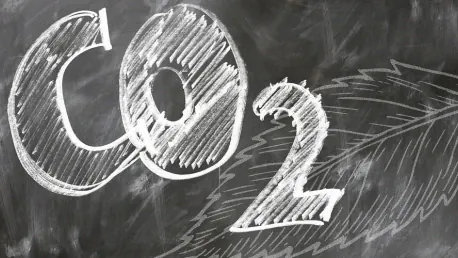In a decisive move towards tackling climate change, the U.S. Department of Energy (DOE) has announced a significant investment of $54.4 million to advance a variety of carbon management technologies specifically designed to reduce carbon dioxide emissions. This initiative, spearheaded by the DOE’s Office of Fossil Energy and Carbon Management (FECM), is closely aligned with the Biden-Harris administration’s ambition to achieve net-zero emissions by the year 2050. The strategy doesn’t just represent an aggressive push against climate change; it also symbolizes an amalgamation of technological innovation and societal well-being.
The recurring emphasis throughout this new funding initiative is the urgent need to scale up carbon management technologies efficiently enough to meet stringent climate goals. The DOE’s funding is aimed at supporting the development of technologies capable of capturing CO2 from both industrial and power generation sources, as well as directly from the atmosphere. These captured carbon emissions are then expected to be transported either for permanent geologic storage or to be converted into valuable products such as fuels and chemicals. Efforts are also centered on addressing key technical challenges while reducing costs to accelerate the nationwide deployment of these technologies.
The Strategic Focus of the DOE’s Investment
Enhancing Technical Efficiency and Cost-Effectiveness
Assistant Secretary Brad Crabtree has shed light on the dual objectives of the DOE’s new investments. One of the primary goals is to enhance both the technical efficiency and cost-effectiveness of carbon capture projects. This entails a concentrated effort on improving existing technologies to capture more CO2 at a lower cost, thus making the overall process more economically viable. In addition to the technology’s technical and financial aspects, Crabtree emphasized that basic improvements could yield significant benefits for communities, workers, and public health. Reducing the environmental risks associated with carbon capture and storage technologies, therefore, becomes an integrated part of the overarching goal.
The funding announcement made by the FECM outlines several critical areas that potential applicants must address. Among these focus areas are reactive carbon capture approaches tailored for point sources and atmospheric CO2 capture. Moreover, there are plans for engineering-scale testing of revolutionary carbon capture technologies and portable systems testing at industrial facilities. These investments signify a scientific and industrial leap aimed at refining carbon capture technologies and ensuring their wider applicability. Another essential focus is conducting pre-Front-End Engineering Design (Pre-FEED) studies for various carbon capture systems, including those at hydrogen production facilities using coal, mixed coal/biomass, or natural gas feedstock. By crossing these technical hurdles, these initiatives aspire to make these technologies universally adaptable and economically pragmatic.
Societal Impact and Community Benefits
In gauging the potential success of these projects, the DOE places substantial importance on societal impacts. As part of the funding requirements, applicants must elucidate how their projects address and integrate principles of diversity, equity, inclusion, and accessibility. This emphasis ensures that the benefits of technological advancements are distributed equitably across all communities. The DOE demands that applicants visibly demonstrate how their projects will deliver substantial and equitable benefits, particularly to underserved communities that historically bear a heavier burden of environmental injustice.
Additionally, addressing CO2 transport infrastructure remains a top priority within the framework of this initiative, underscored by the ECO2 Transport enhancement projects. This addition reflects a comprehensive approach to solving CO2-related challenges — from capture to storage and utilization. Ensuring a robust and efficient CO2 transportation network is fundamental for the seamless movement of captured carbon from its source to storage or conversion sites. By achieving this, the DOE seeks to ensure that the entire carbon management lifecycle becomes more streamlined and effective.
The Broader Implications of the DOE’s Initiative
Integrating Renewable Energy and Grid Resilience
This funding initiative is more than just an isolated effort aimed solely at carbon management. It falls within the DOE’s broader spectrum of activities, which includes other recent investments in renewable energy, the production of critical minerals, and enhancing grid resilience. These collective efforts signal a systematic approach toward tackling climate change and represent a synergy of various technologies and strategies, all working towards a common goal — reducing the carbon footprint.
The approach, therefore, is not only about addressing carbon emissions through innovative technologies but also about integrating these efforts with broader, sustainable energy strategies. For instance, investments in renewable energy resources like solar and wind are designed to complement carbon capture efforts by reducing dependence on fossil fuels. Meanwhile, investments in grid resilience ensure that the energy infrastructure can adapt to the growing demands of a low-carbon economy without compromising reliability and efficiency. These carefully orchestrated measures represent a holistic plan where each initiative reinforces the others, creating a more resilient and sustainable energy ecosystem for the future.









